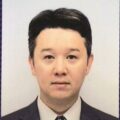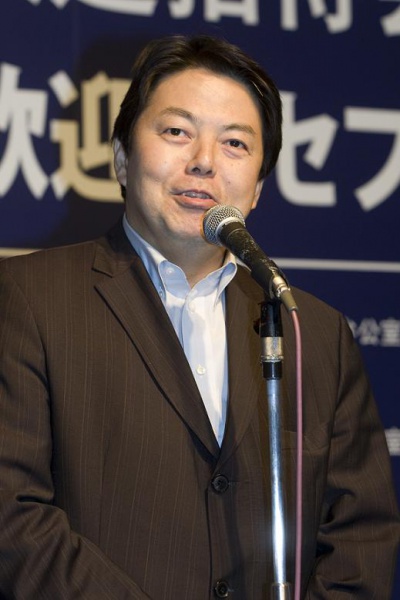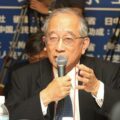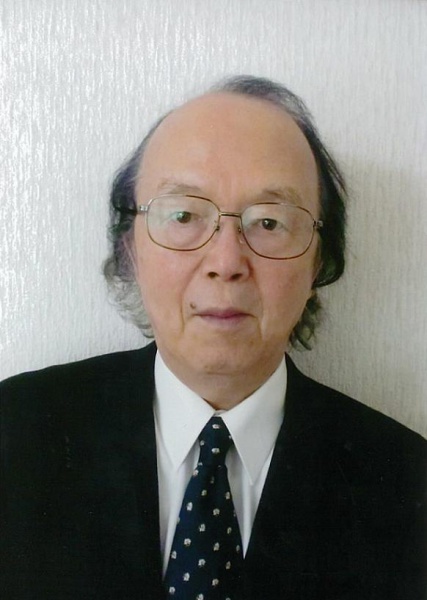Deciphering Japan’s Territorial Issues
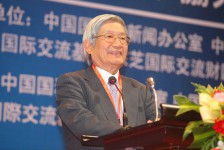
Iokibe Makoto
What is needed at this moment in time is a call for wisdom to relativize and sectionalize the Senkaku issue. There is also a need to acknowledge the route toward “power politics” and “peaceful emergence” in China.
Historical Background to Overheating Takeshima Issue
Japan has long been saddled with two territorial problems since the end of World War II – the Northern Territories and Takeshima Islands. Since around 1970, this has grown to three with the addition of the issue of the Senkaku Islands. At present, all of them have become suddenly and acutely exacerbated.
Of the three, the relatively less overheated issue is the one on the Northern Territories. As is well known, Russian Prime Minister Dmitry Medvedev traveled to Kunashiri Island, one of the four islands, this past July and made nationalistic remarks with Japan in mind, saying, “This is Russia’s native land. We will not give away an inch.”
Nonetheless, Vladimir Putin, who returned as Russian president this year, has been taking a more flexible approach toward Japan. If the two countries can establish political stability, there is still a chance for dialogue to resume that includes the territorial issue. I visited Russia recently and there was absolutely no groundswell of anti-Japanese sentiment or anything of that sort in the country. This is in contrast to the intensity of the problems with China and South Korea that are coupled with anti-Japanese movements.
Nonetheless, it is abnormal to have such isues with all three major neighboring countries exacerbated at the same time. Is it inevitable that the three should be interlocked, or is it pure coincidence? To begin with, one must look into each of the cases separately.
First, the Takeshima issue with South Korea. With regard to the historical legitimacy of Takeshima, I believe that while both Japan and South Korea have evidence that supports their claims to a certain extent, neither possesses decisive grounds strong enough to eliminate the other party’s assertions.
During the Edo period (1603-1868), Japan was in a state of national isolation and Japanese fishermen were prohibited from traveling to other countries to fish. However, even in that era they were allowed to go to Takeshima. In other words, in Japan since the Edo period, Takeshima was not considered foreign land and instead regarded as islets within the Japanese sphere. Having said that, however, it was not as if the Tokugawa shogunate had been exercising effective control over the islets as Japanese territory and excluding others from them at that time.
Being merely rocky islets, Takeshima was uninhabited. There was little activity other than Japanese fishermen going to its vicinity to catch abalone and sea lions, with travelers passing by the waters sometimes stopping to take a look or have a rest. (For details, please refer to “Nihon no Ryodo” (Japan’s Territory) by Kentaro Serita.)
It can thus be said that up until the Edo period, neither Japan nor Korea had exercised effective control or declared the islands as its own territory.
In 1905, during the Meiji period (1868-1912), Japan determined that Takeshima was terra nullius and incorporated the islets into its territories. To this, no objection was raised by any party at all.
But given that it was at a time when the Korean Peninsula itself was about to be annexed by Japan, the possession of Takeshima is seen by the Koreans as “part of Japan’s imperialistic rule,” making it all the more unforgivable from South Korea’s viewpoint.
Then in the postwar period, South Korea unilaterally drew the Syngman Rhee Line in 1952 and has ever since maintained effective control of the islets.
On this issue, it is hard to objectively judge which side is right and declare a winner. However, Japan appears to be at an advantage, from the fact that Takeshima was not mentioned among the Korean islands over which Japan renounced sovereignty when approving Korea’s independence in the San Francisco Peace Treaty, and that the U.S. government has stated in its ultimate response to Korea in 1951 in the so-called Rusk Note by then U.S. Assistant Secretary of State Dean Rusk that Takeshima is not Korean territory.
Anyway, until this day, Japan has repeatedly lodged complaints over South Korea’s effective control of Takeshima. But each and every time, South Korea becomes irritated beyond measure. I suppose that in the background of such anger is the overlapping of Japan’s annexation of Korea (1910-1945) and the issue of Takeshima.
Properly speaking, the two are completely separate issues. But whenever Japan asserts the legitimacy of its sovereignty over Takeshima, South Korea sees it as yet another attempt by the Japanese people to justify their colonial rule and becomes emotional and upset.
President Lee Myung Bak’s Setting Foot on Takeshima – International Folly
South Korean President Lee Myung Bak landed on Takeshima during a visit this August, the first ever by a South Korean president. In response, Japanese Prime Minister Yoshihiko Noda and Foreign Minister Koichiro Gemba used strong rhetoric in Japan’s parliament, criticizing South Korea’s “illegal occupation” of the islets.
Having said that, however, Japan does not intend to retake Takeshima by resorting to armed force. It has once again proposed that the issue be referred to the International Court of Justice for adjudication. I believe it is wise to try to seek an objective judgment, rather than keep talking subjectively and emotionally.
But South Korea said it would never accept the proposal to take the case to the court as it is a Japanese stratagem. Is this not because South Korea is feeling uncertain whether it can win in the event of an objective adjudication?
Remapping territories as a result of wars had been a custom prior to World War II. But since the war, when doing so has become much more difficult, the party exercising effective control has an overwhelming advantage in territorial disputes.
Since South Korea is the one with effective control over Takeshima, its rule will continue for as long as it keeps things as they are without sparking trouble. Staying low-key is in the national interest of the party exercising effective control.
By contrast, having kicked up a row South Korea has now made it widely known to the world that its effective control over Takeshima is questionable. President Lee’s words and actions in visiting Takeshima were nothing but folly from an international standpoint.
There are various assumptions as to why President Lee took such an extreme move.
Born in Japan’s Osaka, President Lee is often seen as being pro-Japanese – a factor that has also become one of the reasons behind his unpopularity. In addition, the South Korean media has been giving the president less and less coverage as his lame-duck administration nears the end of its term, and the president is also burdened by scandals involving his relatives and close aides.
My guess is that in order to turn the situation around, he tried to grab attention by lashing out at Japan. In fact, his support ratings in South Korea appeared to have risen to some extent, but the effect lasted only temporarily.
On the other hand, his visit was a powerful drug, so to speak, for stirring anti-Japanese nationalism and carried with it the severe side-effect of aggravating Japan-South Korea ties. This is too huge a price to pay for the defense of one president’s own interests.
Senkaku Issue – No Longer Can it Be “Shelved”
Meanwhile, the Senkaku issue that is simmering between Japan and China is completely different in character from the cases of Takeshima and the Northern Territories. To begin with, issues with regard to the sovereignty of the Senkaku Islands did not exist until 1970.
Prior to World War II, private Japanese citizens had settled on the Senkaku Islands and there were facilities for processing fishery products. Recently the Japanese government went ahead and purchased the islands off their private owner, effectively nationalizing them. But as one can see even here, private property rights have been established in Japan from the very start.
In the immediate postwar years, the United States administered the Senkakus, along with Okinawa, and there were even times when the islets were used in drills by U.S. forces. During that time, China never made any claim to sovereignty over the Senkakus.
However, the situation completely changed when the United Nations Economic Commission for Asia and the Far East (ECAFE) in 1968 surveyed the seabed in the East China Sea and indicated the following year the possibility of one of the world’s largest offshore oil deposits existing in the continental shelf off the Senkaku Islands. China and Taiwan then began to make their respective territorial claims over the islands.
In other words, the Senkaku issue is one that arose out of the blue around 1970.
Since the 1972 reversion of Okinawa to Japan from postwar U.S. control, Japan has consistently maintained effective control over the Senkakus. In a display of its control, the Japan Coast Guard is always deployed in the vicinity of the islands, while the Maritime Self-Defense Force flies P-3C antisubmarine patrol aircraft over the Senkakus every day without fail.
Even prior to the incident in the autumn of 2010 when a Chinese trawler collided with Japan Coast Guard patrol boats near the islands, the Senkaku issue has flared up on various occasions. For example in April 1978, some 140 Chinese fishing boats gathered near the Senkaku Islands and about 10 of them intruded into Japanese territorial waters.
Nevertheless, Deng Xiaoping, China’s paramount leader at the time, moved to break the deadlock. Back then, the Cultural Revolution had thrown China into disarray and significantly battered its economy. For Deng, nothing was more important than pushing forward his reform and open-door policy to expand China’s economy, and so maintaining economic cooperation with Japan was a must.
In talks with Japanese Foreign Minister Sunao Sonoda that same year upon the conclusion of the Japan-China Peace and Friendship Treaty, Deng suggested that the Senkaku issue be “shelved.”
“Our generation is not wise enough. We will not be able to come to an agreement no matter how much we discuss the Diaoyu (Senkaku) Island issue,” Deng said. “I have no doubt the next generation will be wiser. They will certainly find a solution acceptable to all.”
So with such a proposal from China’s most prominent leader to shelve the issue, Japan’s effective control of the Senkakus was no longer seen as a problem.
However, into the 2010s, this status quo of keeping the issue on hold has begun to crumble. While there are several factors behind this, the most significant of all is that China has grown much stronger both economically and militarily since Deng’s era.
Having enjoyed rapid economic growth continuously for over 30 years, China has at last surpassed Japan in terms of gross domestic product. Moreover, China’s military expenditure has ballooned by so much as 18 times in two decades amid its attempt to significantly change the power balance in Asia, including in the East China Sea.
More and more people in China are beginning to think that if their country’s economic and military powers are not inferior to that of Japan’s anymore, it is no longer necessary to indefinitely shelve the Senkaku issue.
In the past, Deng often cited the Chinese proverb “tao guang yang hui” (hide brightness, nourish obscurity) in advising the Chinese people to keep a low profile and act with humility. It is equivalent to the Japanese saying, “No aru taka wa tsume wo kakusu” (a skilled hawk hides its talons), meaning do not reveal one’s talons or fangs with a view to picking a fight when one has not yet established a sufficient power advantage.
From around 2009, a growing number of people in China began to make use of the “tao guang yang hui” maxim the other way round, claiming that since China is now strong enough, there is no need to hide its talons or fangs any further. Such a view is especially popular among some in the military as well as nationalistic groups.
On this, Chinese President Hu Jintao is said to have handed down an ambiguous verdict as, while saying that Deng’s teachings should be firmly upheld, he also added that China should be more assertive in accomplishing what needs to be done. All this was the backdrop to the fishing boat collision incident near the Senkakus in the autumn of 2010.
While a change in leadership is scheduled to take place soon, Hu and Premier Wen Jiabao, who together have led the nation over the past decade, have adopted a stance that attaches much importance to China’s relations with Japan. Both leaders have constantly stressed China’s “peaceful emergence.” In other words, although China is dramatically strengthening its national power and making its presence felt in the world, it is doing so while placing emphasis on peaceful cooperation with other countries.
Tug of War – Peaceable China, Martial China
As a member of the New Japan-China Friendship Committee for the 21st Century, where experts from both Japan and China gather to compare notes on a range of topics, I once engaged in a discussion directly with Premier Wen. Even then, he spoke fervently in noting that “peaceful emergence is China’s unchanging, long-term policy.”
In addition, President Hu, who was involved in Sino-Japanese relations back in the 1980s in the era under Japanese Prime Minister Yasuhiro Nakasone and Chinese Communist Party leader Hu Yaobang, has long maintained a basic approach that gives much weight to friendly ties with Japan.
And yet, the fishing boat collision incident near the Senkakus occurred in the autumn of 2010 in the midst of Hu’s administration. A Chinese trawler intentionally rammed into the Japan Coast Guard’s patrol vessels which were there to crack down on the fishing boat’s illegal operations in waters off the islands.
The collision was neither something ordered by the Hu administration nor had it been instructed by the Chinese military. While it was said that some senior Chinese officials had pulled wires from behind the scenes, that in fact remains unclear.
Setting aside the background to the case, retaliatory measures taken by China after the incident spanned every field, ranging from the economic front to cultural areas. There was even a case in which Japanese businessmen living in China were detained.
The way China used violent threats in an attempt to intimidate a foreign country gave a bad impression even to other nations. It can thus be said that with its own hands, China tainted its international reputation as a civilized nation and a major power.
Until then, the United States had long maintained that it does not take a position on the Senkaku issue between Japan and China. But following the incident, U.S. Secretary of State Hillary Clinton said that the Senkakus fall within the scope of Article 5 of the U.S.-Japan Mutual Cooperation and Security Treaty.
While a similar remark had been made in the past by U.S. Deputy Secretary of State Richard Armitage during President George W. Bush’s administration, Clinton’s was the first such message spelled out by a high-ranking U.S. official in quite a while. This was a message that the U.S. government cannot agree with China’s attempt to change the state of things by force and was a diplomatic blow for China. Not only did world opinion become more critical of China, it also brought about a considerable amount of actual loss.
I believe China reflected deeply on the situation. In January 2011, President Hu visited the United States and restored relations with Washington.
The following month, when I traveled to China, an internationally acclaimed Chinese opinion leader told me, “Never again will China repeat the mistake it made last year. Furthermore, ‘peaceful emergence’ is our nation’s unchanging basic policy. I hope you will not have any doubts about these two points.”
When a group of Hong Kong activists landed on the Senkaku Islands in August this year, the Chinese government’s response was in principle rather calm and composed. This was likely because of its reflection on its hard-line stance following the 2010 Senkaku incident.
Yet, when the Japanese government decided to nationalize the Senkaku Islands in light of Tokyo Governor Shintaro Ishihara’s campaign for the Tokyo metropolitan government to purchase them, China snapped.
In fact, the Noda Cabinet made the move to nationalize the Senkaku Islands because it wants to keep them in the central government’s own hands so as to prevent Japan’s external affairs from being pushed around by the hawkish governor, who is not in a position to take charge of foreign and security issues.
China, however, took it as a provocation from the Japanese national government. Beijing condemned Japan and took a stance of approval toward anti-Japanese protests. Massive anti-Japanese demonstrations of unprecedented scale soon spread all over China. Even so, I believe it is not the Hu administration’s true intention to have relations with Japan deteriorate beyond control.
I reason that right now in China there are “two Chinas.” And by two, I do not mean China and Taiwan.
One is the China for “peaceful emergence,” which believes in maintaining cooperative ties and mutually dependent relations with Japan and other countries in order to continue the nation’s growth in the world’s market economy.
The other is the China of power politics, which would push its way through even if it means flexing its military muscle as long as that serves the nation’s interests.
Right now in China, the two are competing against each other and continuing a tense tug of war.
While the Hu-Wen leadership most probably believes they must hold on to the former, the latter is gaining influence in a China that has risen by great leaps both economically and militarily in recent years. In addition, a fierce power struggle is unfolding at present as the country undergoes a transition of leadership to Vice President Xi Jinping.
Unlike postwar Japan, China – being a country born through revolutionary war – does not have a sense that “military affairs are evil.” The Chinese notion of comprehensive national power is dependent on both economic clout and military strength. It is a country that will not rule out the possibility of resorting to the use of force should it believe that using its military power is in its national interest.
This is something Japan must keep in mind.
How to Deal with Senkaku Issue from Now?
How, then, should Japan handle the Senkaku issue from now on? Firstly, it is important to continue maintaining effective control in a quiet manner, without conducting the kind of publicity stunts made by South Korea’s President Lee and Russia’s Prime Minister Medvedev. Japan must not pointlessly take up a defiant attitude and provoke China.
Japan must also strengthen its defense, within the parameters of its exclusively defense-oriented policy, in order to convey to China the message: “We will not let you easily take away the Senkakus.”
Currently, areas to the southwest of Naha on the Okinawa main island are almost defenseless. It is necessary to build up thorough capabilities for exclusive defense there.
For example, one of the purposes of having a Self-Defense Forces (SDF) presence on Ishigaki Island would be for rescuing island residents should a tsunami hit. The Yaeyama Islands centering on Ishigaki bear the tragic past of having lost about a third of their residents to the Great Tsunami of Meiwa in 1771. Thus in preparing for the next tsunami, the stationing of the SDF should also be considered as a measure to protect residents’ lives.
The one time Japan was reduced to ruins in the 20th century was when it wrecked both its relations with the two major powers on both sides – China and the United States. We must not repeat such a folly in the 21st century.
Great powers are apt to often act self-centeredly, being arrogant and difficult to get along with. Given that the United States and China are not just major powers but gigantic superpowers, it is hardly possible that they will be easy to deal with.
If Japan gets upset and emotional over everything and becomes quarrelsome, it would likely worsen relations with the two giants on both sides and lead to a repetition of its mistake in the 20th century. What Japan needs to do is to quietly fortify necessary defenses while building up good relations.
This is why Japan must stick firmly to the two axes of the “Japan-U.S. alliance plus Japan-China entente.” That is the basis for Japan’s survival and prosperity in the 21st century.
Returning to where I started, at this moment Japan is making its conflicts with its three major neighbors apparent. As I have stated, the historical legitimacies regarding the territories are in Japan’s hands. I believe the imbroglios right now are not because Japan did something wrong but rather due to the other parties’ behavior and conduct.
However, to have these problems aggravated all at once with the three other major countries means that after all Japan is also partly to blame, due to its lethargy in undertaking more proactive international involvement.
If the Japanese government had taken the lead in significantly advancing relationships and stood as a key player in Asia-Pacific relations, leaders of the other countries would never have done such things as set foot on disputed ground. This is something I believe Japanese politicians and Japanese society, which are preoccupied with inward-looking issues and often get worked up about domestic politics, must reflect upon.
=====================
Translation of an article (pages 88-95) from Ushio 2012 November issue (Ushio Publishing Co., Ltd.).
Makoto Iokibe was born in 1943 in Hyogo Prefecture. He graduated from the faculty of law at Kyoto University with a master’s degree in political science and later received a doctorate in law. He taught as a professor at the graduate school of law at Kobe University and was visiting fellow at both Harvard University and London University. He has also headed the Japanese Political Science Association’s board of directors and served as president of the National Defense Academy of Japan. Currently, Iokibe chairs the boards of directors at the Prefectural University of Kumamoto as well as the Hyogo Earthquake Memorial 21st Century Research Institute. He also chairs the government’s Reconstruction Design Council in response to the Great East Japan Earthquake.
Named by the government as a person of cultural merit and a winner of various awards including the Suntory Prize for Social Sciences and Humanities, the Shigeru Yoshida Award and the Sakuzo Yoshino Award, his major publications include “Beikoku no Nihon Senryo Seisaku” (U.S. Occupation Policy for Japan) and “Nichibei Senso to Sengo Nihon” (The U.S.-Japan War and Postwar Japan).
